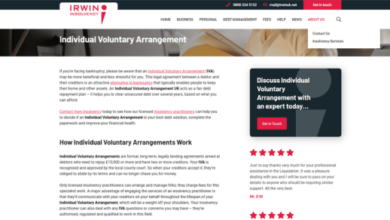
Starting with web hosting as a beginner can be a bit overwhelming. However, breaking it down into steps can make the process more manageable. Here’s a comprehensive guide with 30 points along with the pros and cons for each step to help beginners navigate web hosting:
1. Define Your Website’s Purpose:
- Pros: Clearly defined goals help you choose the right hosting.
- Cons: Unclear goals can lead to inappropriate choices.
2. Choose a Domain Name:
- Pros: A memorable domain name is essential for branding.
- Cons: Popular domain names may already be taken.
3. Select a Reliable Hosting Provider:
- Pros: A reputable provider ensures better service.
- Cons: Choosing the right provider can be time-consuming.
4. Understand Hosting Types:
- Pros: Knowing the types (shared, VPS, dedicated) helps align with your needs.
- Cons: Overly complex hosting jargon can be confusing.
5. Consider Shared Hosting:
- Pros: Budget-friendly for beginners with low traffic.
- Cons: Limited resources and potential performance issues.
6. Evaluate VPS Hosting:
- Pros: More resources and control than shared hosting.
- Cons: Requires more technical knowledge.
7. Explore Dedicated Hosting:
- Pros: Full server control and performance.
- Cons: Expensive and overkill for small websites.
8. Review Hosting Features:
- Pros: Ensure essential features like SSL, email, and backups are included.
- Cons: Feature comparisons can be overwhelming.
9. Check Uptime Guarantees:
- Pros: Uptime guarantees ensure your website is accessible.
- Cons: Downtime can still occur, impacting user experience.
10. Assess Scalability Options: – Pros: Consider future growth and scalability. – Cons: Overestimating needs can lead to unnecessary costs.
11. Investigate Customer Support: – Pros: Responsive support can resolve issues quickly. – Cons: Quality of support can vary among providers.
12. Understand Pricing Models: – Pros: Clear pricing helps budget your hosting expenses. – Cons: Complex pricing can lead to unexpected costs.
13. Register Your Domain: – Pros: Secure your chosen domain name. – Cons: Domain registration fees apply.
14. Set Up Email Hosting: – Pros: Professional email addresses add credibility. – Cons: Email setup may require technical know-how.
15. Install a Content Management System (CMS): – Pros: CMSs simplify website creation and management. – Cons: Some CMSs have a learning curve.
16. Choose a Website Builder: – Pros: Website builders are user-friendly for beginners. – Cons: Limited customization compared to CMSs.
17. Design Your Website: – Pros: Create an appealing and functional website. – Cons: Design can be time-consuming.
18. Optimize Website Performance: – Pros: Faster websites improve user experience. – Cons: Optimization may require technical skills.
19. Create Content: – Pros: High-quality content attracts visitors. – Cons: Consistent content creation can be challenging.
20. Implement SEO Strategies: – Pros: SEO improves your website’s visibility. – Cons: SEO is an ongoing effort.
21. Test Your Website: – Pros: Ensure your site works on various devices and browsers. – Cons: Identifying and fixing issues can be time-consuming.
22. Add Security Measures: – Pros: Protect your site from cyber threats. – Cons: Security breaches can still occur.
23. Monitor Website Analytics: – Pros: Analytics provide insights into your website’s performance. – Cons: Data analysis may require time and expertise.
24. Backup Your Website: – Pros: Regular backups protect against data loss. – Cons: Backup management can be time-consuming.
25. Implement SSLTLS Encryption: – Pros: Secure data transmission and build trust. – Cons: SSL certificate management is necessary.
26. Optimize for Mobile Devices: – Pros: Mobile-friendly design enhances accessibility. – Cons: Mobile optimization may require adjustments.
27. Promote Your Website: – Pros: Marketing efforts drive traffic and engagement. – Cons: Effective marketing can be competitive.
28. Engage with Your Audience: – Pros: Interaction builds a loyal user base. – Cons: Time-consuming to respond to all inquiries.
29. Stay Informed: – Pros: Continuously learn about web hosting and technology. – Cons: Staying updated can be time-consuming.
30. Regularly Update and Maintain: – Pros: Keep your website secure and up to date. – Cons: Maintenance tasks can be ongoing.
Starting with web hosting as a beginner involves a learning curve, but breaking the process into steps can make it manageable. The key is to research, learn, and adapt as you navigate the world of web hosting and website management.




